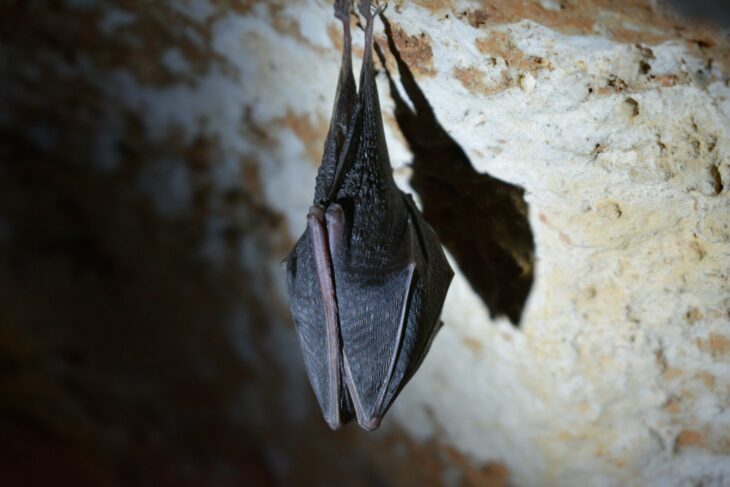Caves have attracted humans for centuries due to their breathtaking formations and unique animals that create some of the most unusual ecosystems in the world. Bats are popular cave-dwelling animals that play a large role in altering the cave environment. They produce droppings called guano that fill up cave passages over time. Guano contains microorganisms like bacteria that produce acids when they utilize the nutrients and organic matter within.
Most cave formations are calcium carbonate mineral deposits known as speleothems. Calcium carbonate minerals dissolve if exposed to acids, like mixing vinegar and baking soda. This dissolution process is called corrosion.
Apart from being beautiful, speleothems also form layers as they grow, like tree rings. Speleothem growth rings store information about past local climates. But when corrosion occurs, it leaves gaps in the growth rings. These gaps make it difficult for scientists to understand past climate records.
Scientists have hypothesized that bat guano could compromise climate records in speleothems since it contains acid-producing microbes. Therefore, a team of researchers from Poland and Slovakia decided to examine guano corrosion in caves and analyze corrosion features on speleothems.
They selected 4 caves in Europe for their investigation. Three caves, Domica, Drienovská, and Jasovská caves, are in southern Slovakia. The fourth cave, Nietoperzowa cave, is in Poland. They selected these caves because each cave had a different-sized bat colony and different amounts of guano accumulation. Most of the guano found in each of the 4 caves accumulated only a few hundred meters from the entrance.
During their field investigations, the researchers sampled speleothems and guano from each cave. Since the guano was dry, they mixed it with water to make it suitable for chemical analysis. They determined the mineral composition of the sampled speleothems using a geochemical technique called X-ray diffraction or XRD. They also measured the age of corrosion gaps in the speleothems based on their radioactive carbon.
To measure corrosion, the researchers placed small tablets of a rock formed from calcium carbonate, called limestone, in each cave. They buried some tablets under guano piles and left others on the surface so bat guano could accumulate on top. After 230 to 900 days, they removed and cleaned the tablets to measure how much limestone had dissolved based on how much weight they lost. The scientists also cut the tablets into thin sections to examine the corrosion features in detail under a microscope.
The researchers reported that most tablets lost between 0.003 to 0.013 grams of weight (that’s less than 1/1,000th of an ounce). They calculated the maximum corrosion rate to be around 0.1 millimeter per year (or 0.004 inch per year), with an average of around 0.03 millimeter per year (0.001 inch per year).
They found some of the tablets actually gained weight by forming a thin yellowish-brown crust. They used XRD analysis to measure the chemistry of the crust, and determined it mostly contained calcium and phosphate, similar to the minerals that make up teeth. They hypothesized that the new minerals formed when phosphorus in the guano interacted with carbonate minerals, indicating past periods of guano corrosion.
The researchers explained that guano corrosion of speleothems depended on 3 factors. The first was the input of guano within the cave. Some caves had fewer bats with less guano accumulating, while others had more bats with more guano accumulating. The second factor was the distribution of guano within the cave. They found that areas of the cave that bats preferred to live in had ample guano corrosion.
The third factor was the supply of water dripping from the cave ceiling, which affected how wet the guano was. Since water is important in transporting acids, the absence of water resulted in little to no corrosion. Cave areas with a high water supply washed away guano that had accumulated on the speleothems, also resulting in no corrosion.
The researchers found that the highest corrosion rates were in cave areas with moderate amounts of drip water and a high density of bats. They concluded that guano corrosion was mainly influenced by the guano composition, the local climate, and the movement of water within the cave.


